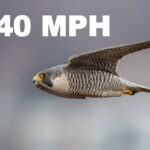Praying mantises are fascinating insects, instantly recognizable by their upright posture and seemingly contemplative demeanor. Often seen as symbols of stillness and patience, a common question arises about these intriguing creatures: Does A Praying Mantis Fly? The answer is yes, praying mantises are indeed capable of flight, though their aerial habits are more nuanced than many might expect.
To understand a praying mantis’s flight capabilities, it’s important to examine their physical characteristics. Mantids are relatively large insects, with adults ranging from 2 to 5 inches in length. As detailed in entomological studies, their anatomy includes two sets of wings. The forewings, known as tegmina, are leathery and narrow, acting as a protective cover for the delicate hindwings when at rest. The hindwings, however, are broad and fan-shaped, perfectly designed for flight. When a mantis takes to the air, these hindwings unfurl, providing the lift and propulsion necessary for aerial movement.
While equipped for flight, praying mantises are not primarily aerial hunters like dragonflies or actively flying pollinators like bees. Their hunting strategy is largely based on ambush predation. They are masters of camouflage, blending seamlessly into their surroundings, often remaining motionless for extended periods, waiting for unsuspecting prey to wander within striking distance. This sit-and-wait tactic is highly effective and conserves energy, which is crucial for a relatively large insect.
Flight in praying mantises serves several key purposes. Firstly, it aids in dispersal. Like many insect species, flight allows mantises to explore new territories, colonize different habitats, and avoid overcrowding in their current location. This is particularly important for nymphs hatching from egg cases, as they need to find their own hunting grounds.
Secondly, flight is an effective escape mechanism. When threatened by predators, a praying mantis can quickly take flight to evade danger. Their flight, while not as agile as some flying insects, is sufficient to carry them away from ground-based threats like birds or small mammals.
Furthermore, flight plays a role in mating. Male praying mantises, in particular, are more prone to flying than females. They use flight to locate potential mates, navigating through vegetation and across distances to find females ready to reproduce. This is a critical aspect of their life cycle, ensuring genetic diversity and the continuation of the species.
The flight pattern of a praying mantis is often described as somewhat erratic and less graceful compared to insects like butterflies or moths. They are not known for sustained, long-distance flights. Instead, their flight is typically characterized by short bursts, often used to move between perches or to quickly cover short distances. This type of flight is well-suited to their ambush hunting style and their need to navigate through complex environments of vegetation.
It’s also worth noting that while both nymphs and adult mantises possess wings, flight behavior may vary across different life stages and species. Younger nymphs, with their developing wings, may be less adept at flying compared to mature adults with fully formed wings. Species variations also exist, with some mantis species being more inclined to fly than others depending on their habitat and ecological niche.
In conclusion, while praying mantises are perhaps more famous for their stillness and predatory prowess while grounded, they are indeed capable fliers. Flight serves vital roles in their life cycle, including dispersal, predator evasion, and mate finding. Understanding that a praying mantis does fly, even if not their primary mode of locomotion, provides a more complete appreciation for the multifaceted nature of these remarkable insects. Their wings, often hidden beneath leathery forewings, are a testament to their adaptability and survival strategies in diverse ecosystems.
